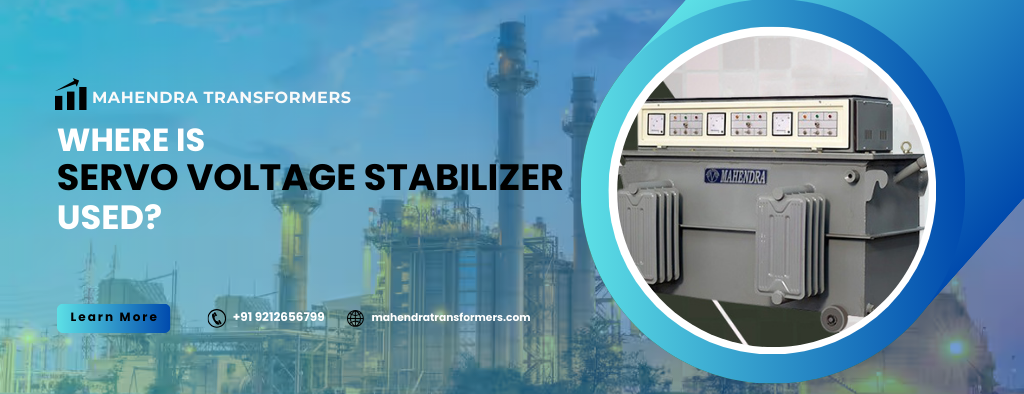When it comes to protecting electronic devices and sensitive electrical equipment from voltage fluctuation, Servo Voltage Stabilizers are indispensable. These stabilizers ensure a consistent supply of voltage to devices, thereby ensuring their optimal performance and enhancing appliance life.
Servo voltage stabilizers come with simple electronic components, transformers like the Variable Transformer and Buck Boost Transformer, and servo motors to ensure the incoming power supply is regulated and provides the precise output voltage you need. Note that every different machine and appliance requires a specific voltage.
Because many options are available in the market when choosing a servo voltage stabilizer, choosing the right one can be daunting. So, let’s walk through this technical guide to choose the right servo voltage stabilizer.
Single-Phase or Three-Phase
First of all, determine whether you should choose a single-phase or three-phase stabilizer. It’s pretty simple—just check your electrical grid connection.
- Choose a single-phase stabilizer if you have a single-phase grid connection.
- A three-phase servo voltage stabilizer is the right option if you’re on a three-phase grid.
Determine Your Load Requirements
The next step is to understand how much load you require. Also, determine the power consumption of the equipment or machine you will connect to the stabilizer.
It is important to follow the instructions below.
- Measure the total load and cumulative wattage (kVA) of all equipment.
- It is advisable to choose a stabilizer with 25–30% additional capacity to handle extra load in the future.
For example, if you need 10 kVA, then opt for a servo stabilizer with a minimum of 12.5 kVA capacity.
Evaluate Input Voltage Range
Voltage fluctuations differ depending on geographical location and power supply quality. Before selecting a servo voltage stabilizer, you need to identify:
- The lowest voltage your area experiences.
- The highest voltage recorded.
Once you have determined the lowest and highest voltage range, choose a stabilizer with an input range that encompasses these extremes. Learn that 170V-270V is a common range and 140V-300V is a wider range for places with severe fluctuations.
You can get help from Mahendra Transformers. Our experts will help you choose the right stabilizer for your needs. The company supplies servo stabilizers from 1 KVA to 2000 KVA.
Output Voltage Accuracy
Remember that servo voltage stabilizers are designed to ensure consistent output voltage. It typically sets at 220V or 230V. Do not forget to examine the output voltage accuracy.
- ±1% or±0.5% accuracy is suitable for high-end or precision equipment, such as medical devices and CNC machines.
- ±2% accuracy is ideal for general industrial or residential applications
Technology Features to Consider
Servo voltage stabilizers designed by Mahendra Transformers have advanced features that enhance performance and safety. When choosing one, do look at the digital display, overload protection, phase balancing, auto bypass function, and more.
Note that:
- A digital display provides real-time input and output voltage readings.
- The overload protection feature protects the stabilizer and connected devices from overcurrent.
- Phase balancing maintains stability in three-phase systems.
- The role of the auto-bypass function is to keep the equipment operational during stabilizer failure.
Minimal Maintenance Requirement
Another point is to ensure that the device you are buying requires minimal maintenance and offers easy repairs. Mahendra Transformers designs and supplies stabilizers using advanced technologies and specifications. You can buy products with easy replacement of parts. So even a non-professional can do the maintenance.
Conclusion
When selecting a servo voltage stabilizer, note that some machines might require a 380V output, while others could require 400V. The role of the stabilizer is to supply the required amount of voltage to each machine.
Before choosing one, consider single-phase or three-phase stabilizers, determine total load requirements, evaluate input voltage range, and check output voltage accuracy and minimal requirements. If you are still doubtful about selecting a servo voltage stabilizer, contact Mahendra Transformers, your one-stop solution, to make an informed decision and choose Servo voltage stabilizers Manufacturers that meet your needs.

